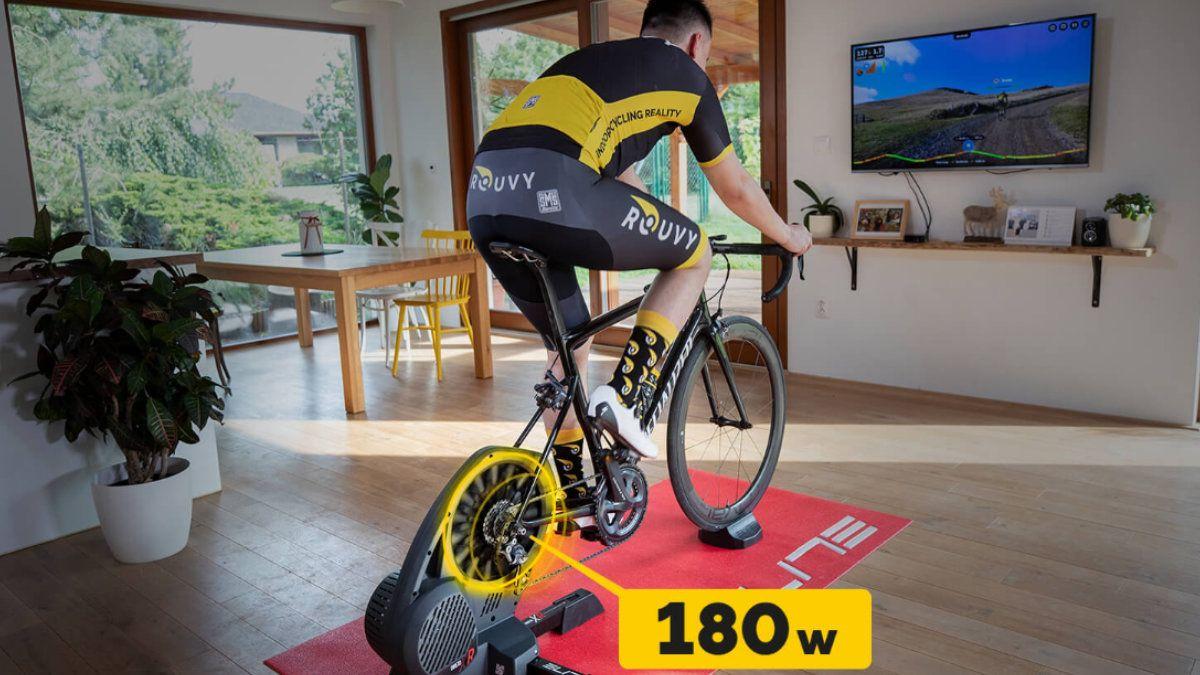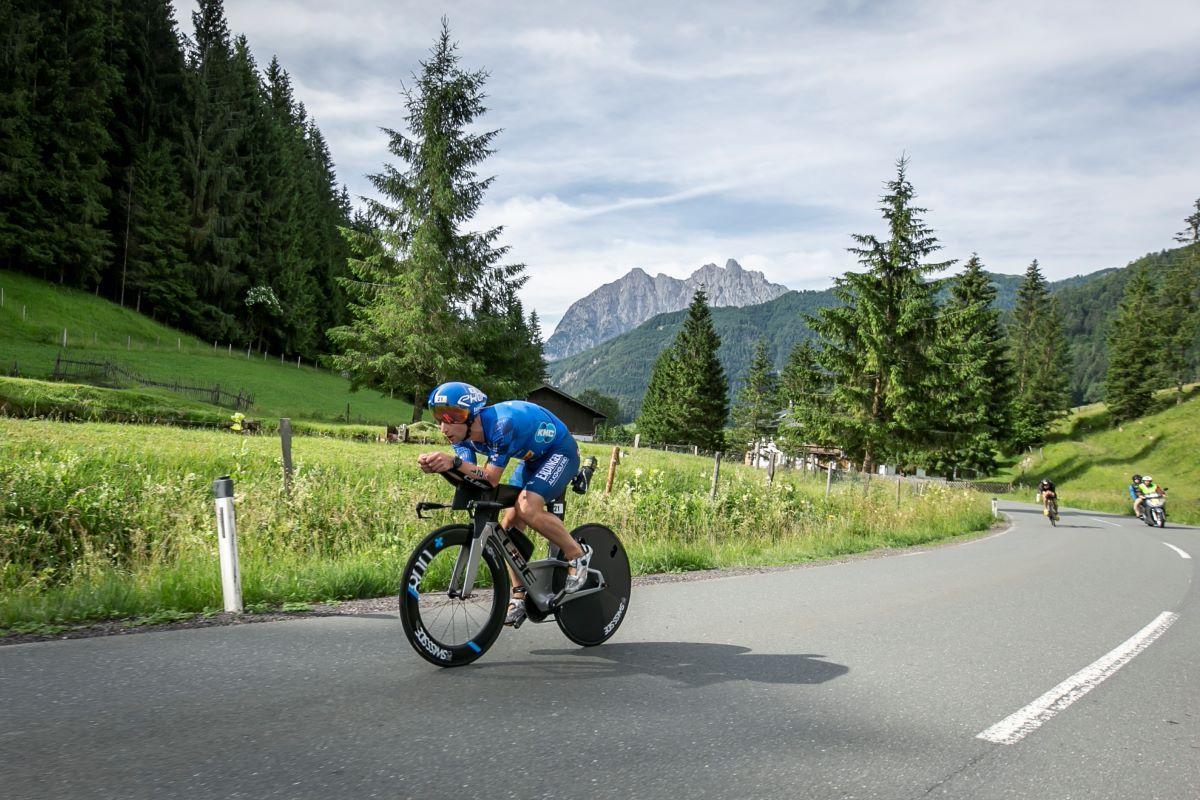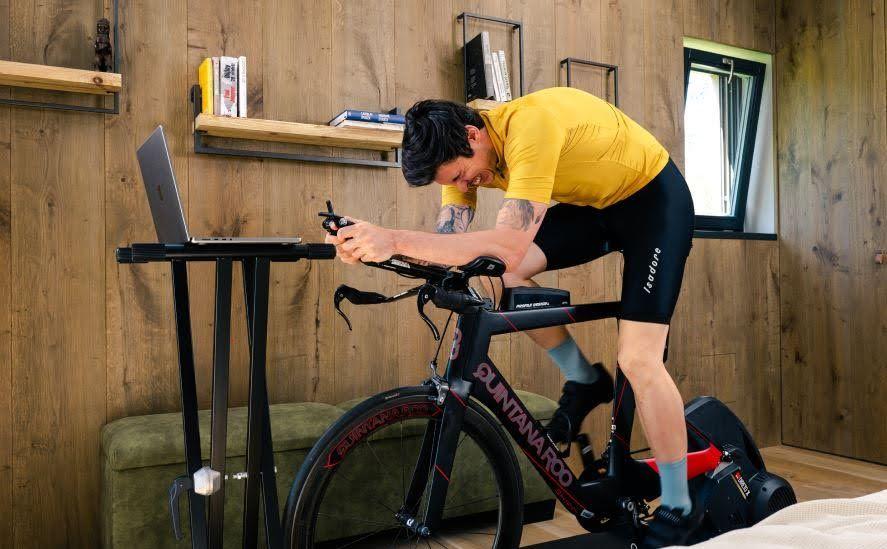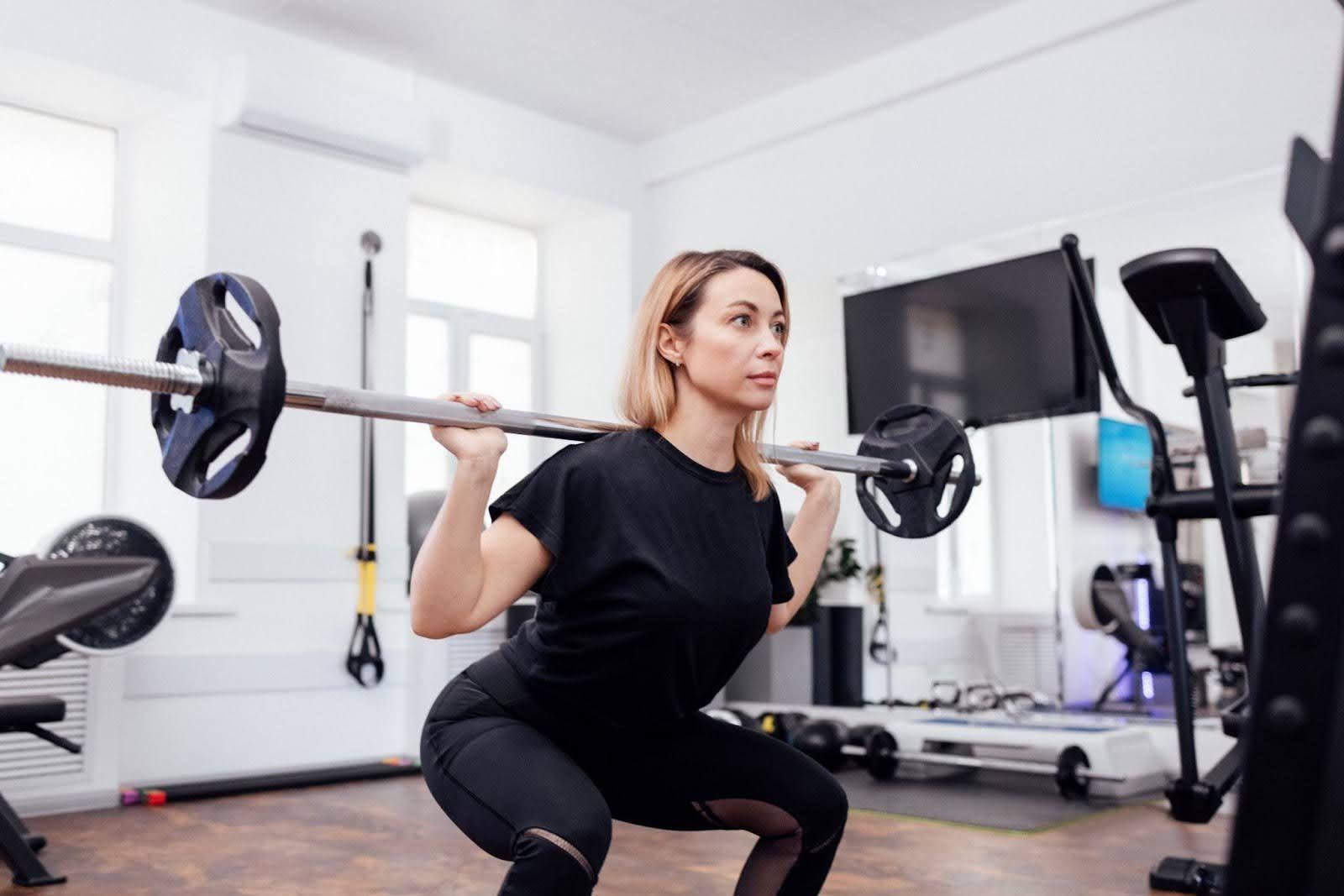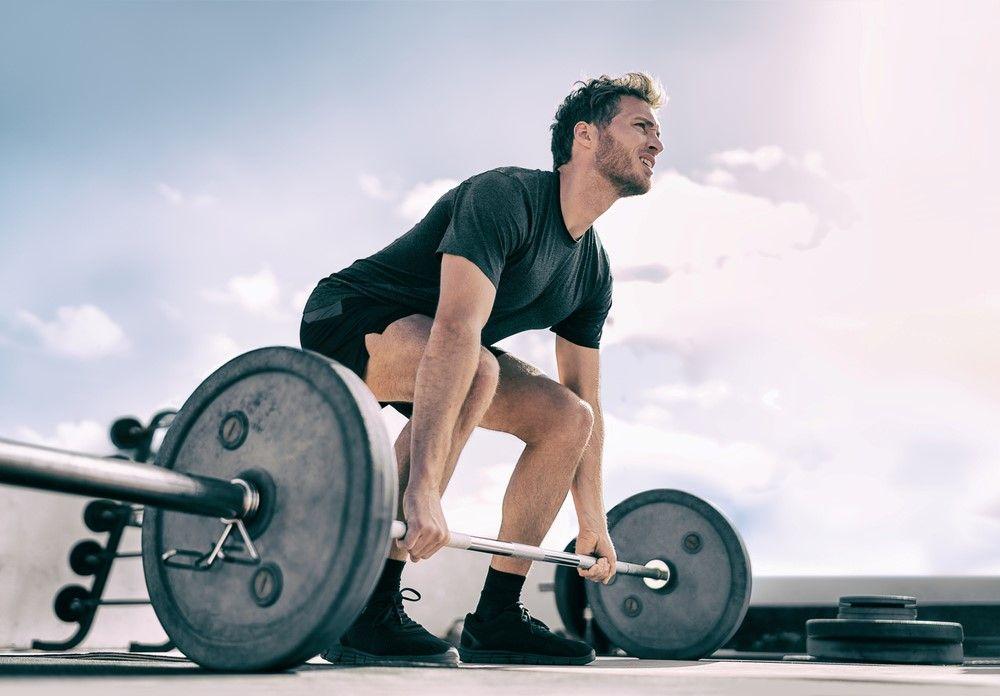Wattage is one metric that will help you no matter what level of cyclist you are. This is something you might have discovered from using the ROUVY application. That little number in the corner which increases the harder you work.
Watts can be a game changer when it comes to your training. This article will tell you everything you need to know about watts.
- What are watts?
- How do we measure watts?
- How can Watts help your training?
- Considerations when training with watts
What are Watts?
It all started in the late 1980s when professional cyclists and teams started experimenting with power. They realized the data was much more accurate and could help these riders ensure they had the perfect load on the body when training. Watts are the unit of power which measures how much energy you are producing on the bike.
Unlike heart rate, watts are not affected by many influences, such as how much coffee the rider drank that morning, how well they slept the night before, and how warm the room might be. This is what makes power so special. It's incredibly accurate data that can be used in real-time when you're training.
How do we measure watts?
Watts are a power measurement commonly used by cyclists to understand how well they can perform. The equation to get your watts is as follows;
Watts = Force x Velocity
The force is how hard you are pressing on the pedals. A good way to understand force is tightening up a bolt on your bike. You need to ensure you have the correct amount of Newton Meters. This is the force that needs to be applied by the torque wrench.
Velocity is the speed that force is applied to your pedals. In a cyclist's case, this will be your RPM or Cadence. The quicker you can apply the same force, the greater wattage you will be able to produce.
Bring these two metrics together, and you get power. This is displayed as a wattage figure and can be viewed in real-time using a smart turbo trainer or power meter. You typically use a power meter or a smart turbo trainer to train with watts.
These devices have something which is called a strain gauge. A strain gauge under force can tell you the load being applied. Then the power meter will measure the velocity. Combined together, they can give you your power figure in watts. Typically when looking at data from a power meter, you will see average power and normalized power.

Average Power
The average power is when you look at the workout as a whole or a section of the workout. This pulls all the power data together and gives you the average wattage over the duration, taking into account rest and sprints, etc.
Normalized power
Normalized power is different and something you won't see too often unless you are very serious about training. Normalized power looks at your workout overall and gives you an estimated power figure that could have been achieved if you were at a constant rate for the same metabolic cost.
Do you want to know more? Read about the physics behind watts.
How can Watts help your training?
Training with watts and heart rate is an incredible way to get fitter. Using power numbers, you can completely tailor a workout to you. When it comes to getting the best bang for your buck in training, it’s not about how hard you train but also how smart you are with that training.
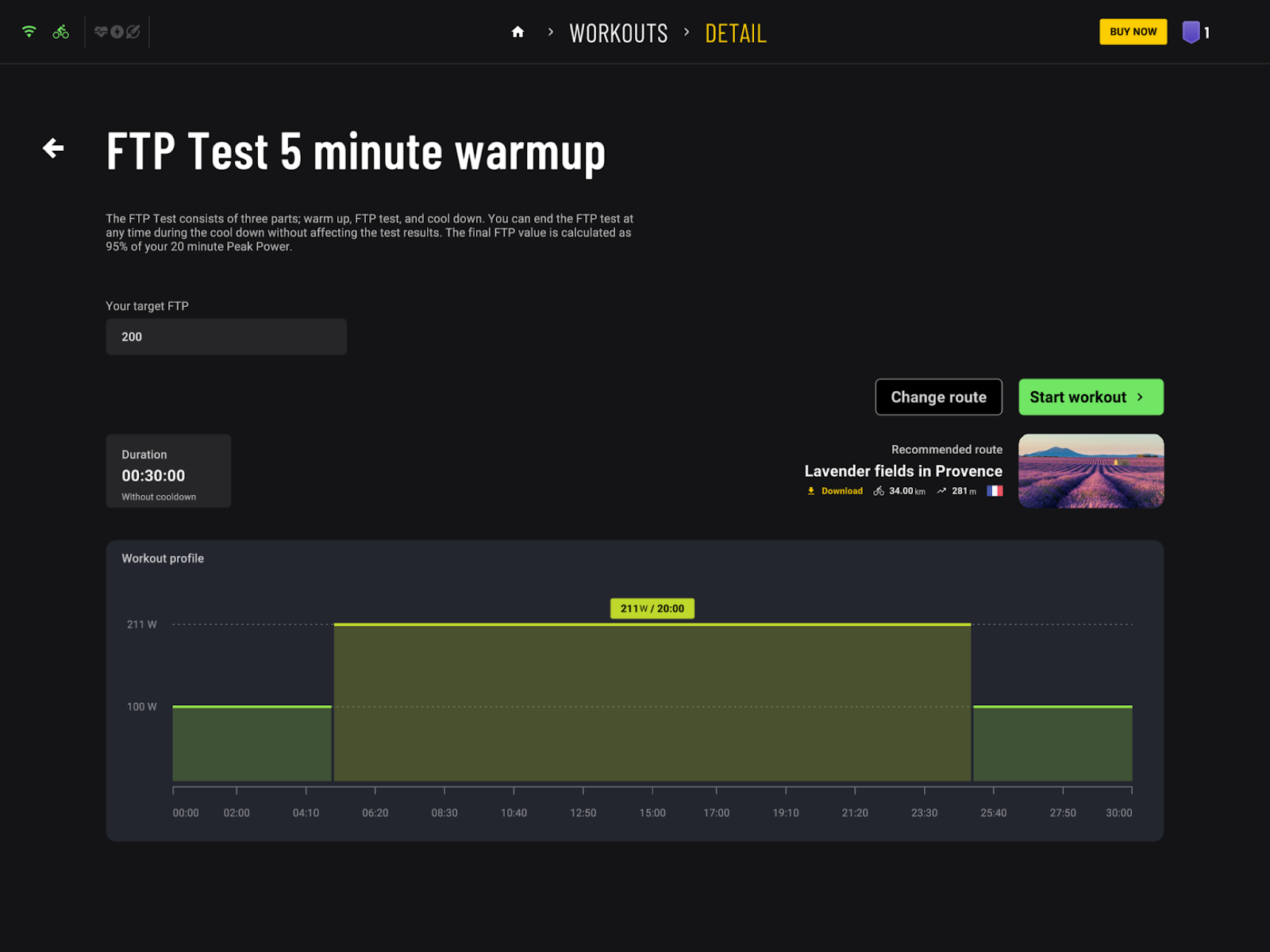
To get the best out of training with power, it’s good to start by doing an FTP test. This is a small workout that lasts between 24 minutes and 40 minutes. The main goal of this workout is to give 20 minutes of the most power you can. You take the average number and -5%, which gives you an FTP Score. For example, say you held 200w, your FTP score would be 190w.
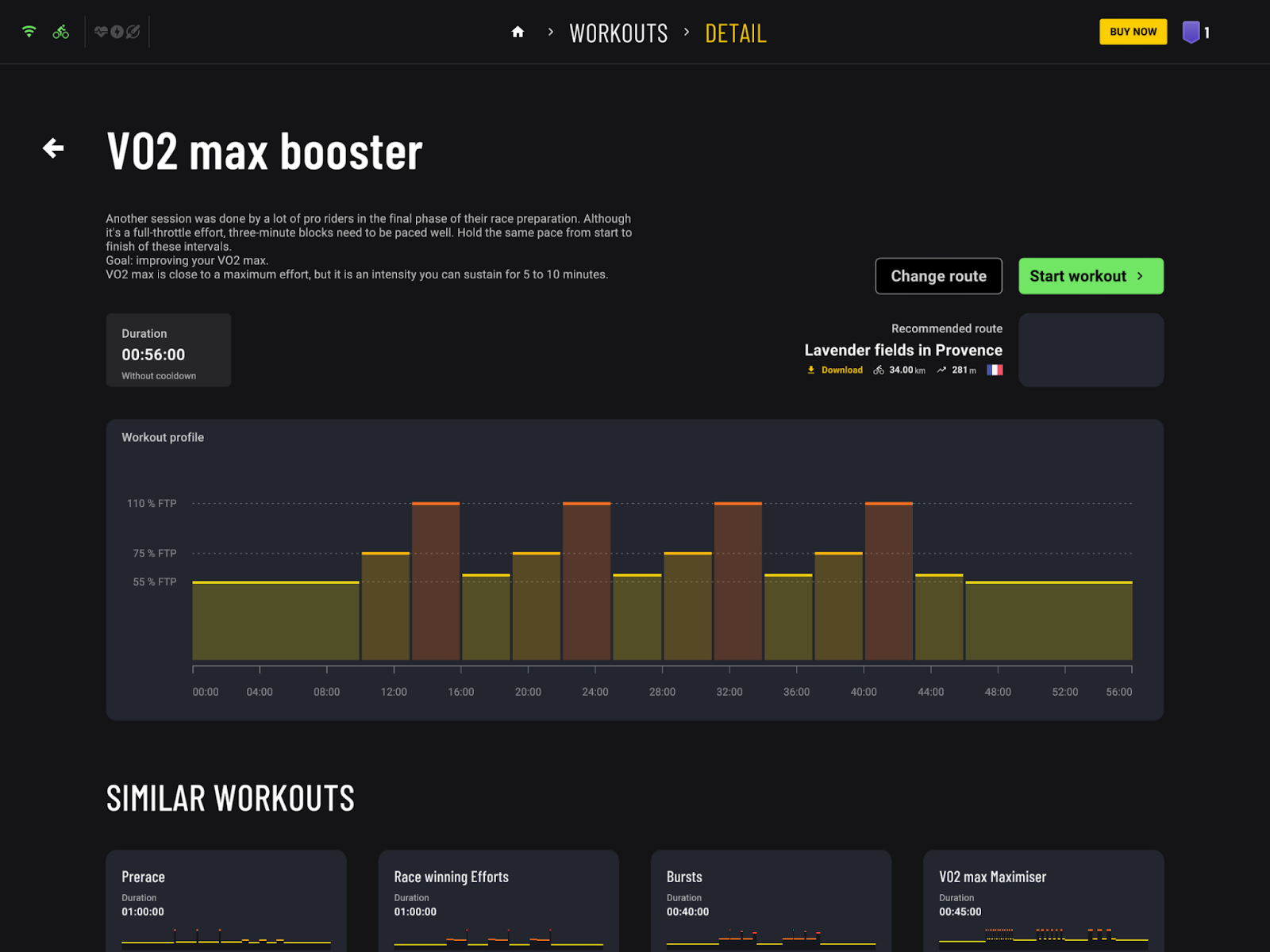
Using this FTP score data, you could go into a workout such as the V02 max booster, where Rouvy will tailor the numbers to ensure you are working with the correct training load. In this workout, 55% FTP would be 105w, 75% FTP would be 143w, and 110% FTP would be 209w. So what watts do is let you train in zones like so;
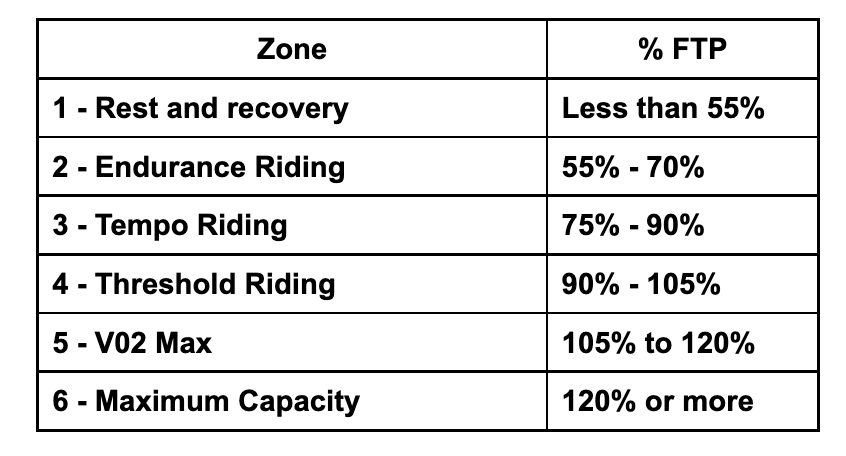
So you have a perfect workout from ROUVY completely tailored to your strength that will produce the best training results. These are the kind of workouts the professionals are doing to get fitter and stronger. This is a prime example of training smarter, not harder.
Find out more about training zones.
Considerations when training with Watts
Watts is a great way of understanding the power you can produce as a cyclist. Naturally, we question how we fare against other cyclists with this data. Before asking your fellow cycling club members how you compare, here’s what you need to know.
Weight makes a difference
Typically if you weigh more, the more power you can produce. Heavier riders generally can produce more watts. So a 6ft rider will have an easier time creating watts than a 5ft 4” rider.
The better calculation to make to estimate who can produce more power is watts per kilo. This is your FTP divided by your weight in KG. We speak about this more in this article.
Accuracy is an issue
When buying a turbo trainer or power meter pedals, you will typically see they list the accuracy. On high-end turbo trainers, you will have them accurate up to 1% to 2%. On the more budget options, it could be 3% to 5%.
Although it doesn’t sound like much, it makes a big difference. 5% of 300 is 15 watts, and that's a big amount in an online race. So if you are less, don’t take it too personally.
What does always equate to speed
Over my time as a cyclist, I have noticed that the performance some cyclists have indoors doesn’t always match what they can offer outdoors. I have seen many cyclists with very high FTP figures, but when it comes to riding outside, it’s a very different story.
The same goes for the opposite side. Some cyclists generally have very low FTP scores, but out on the roads have the incredible ability.
Conclusion
Watts can be a great way to help your cycling. The data is incredible, and it offers so much when it comes to structuring your training. We highly recommend getting a smart turbo trainer or power meter so you can understand more about yourself as a cyclist.
If you are already using watts how has it changed your training? Will you be training with watts in the future or stick to heart rate or feel?
